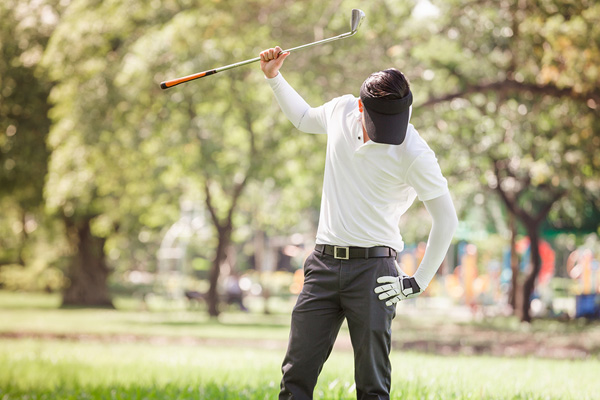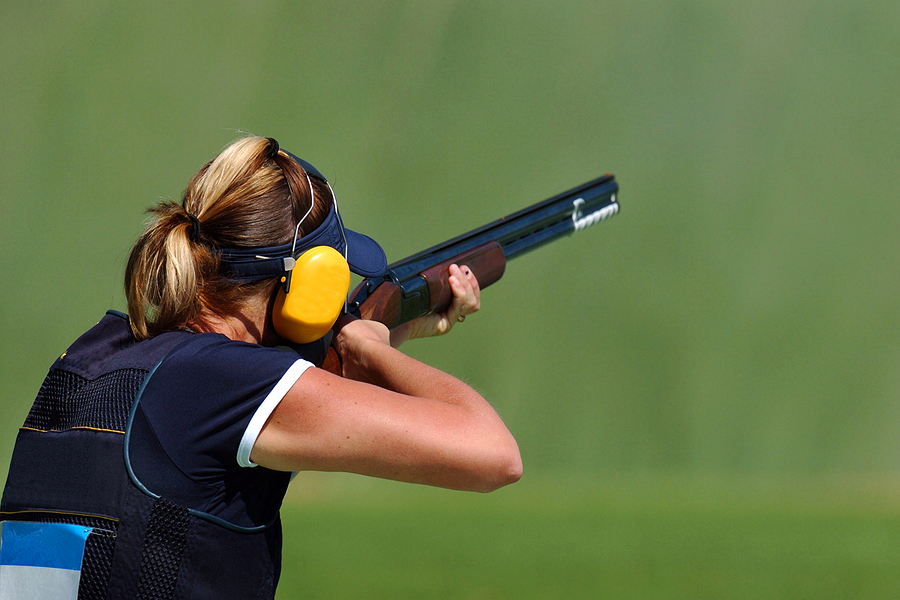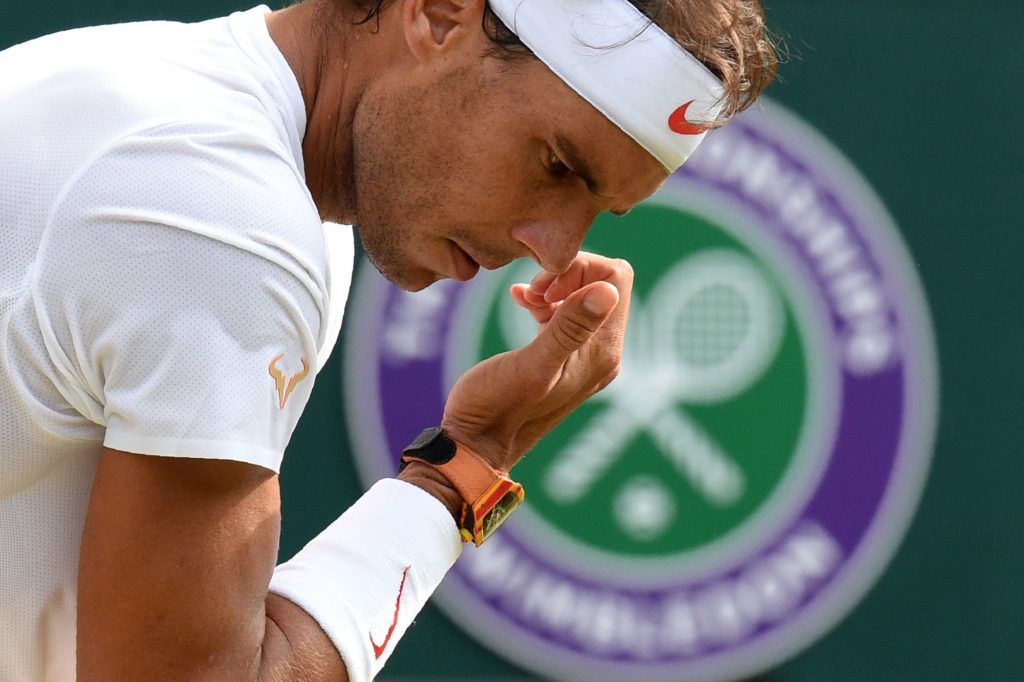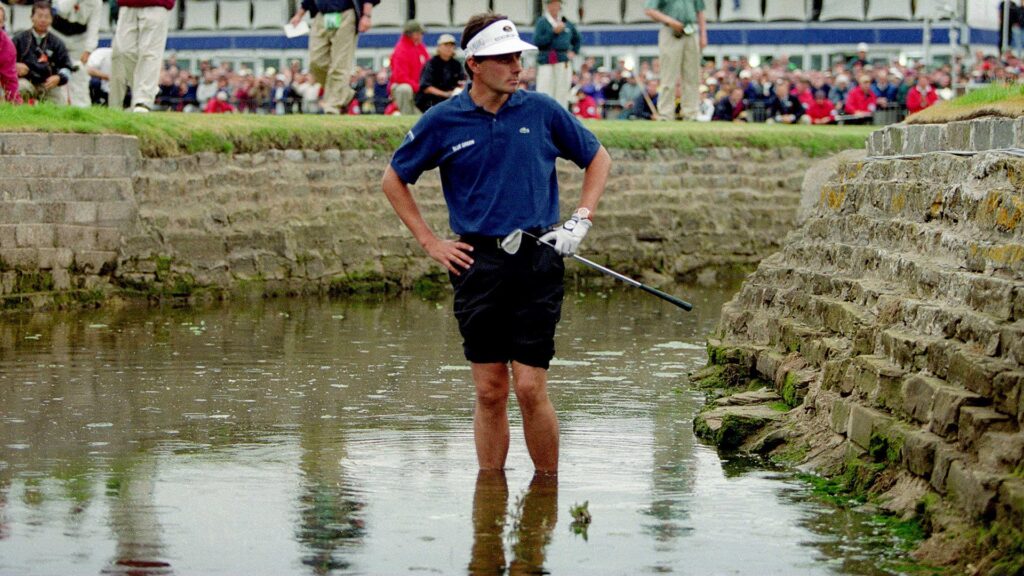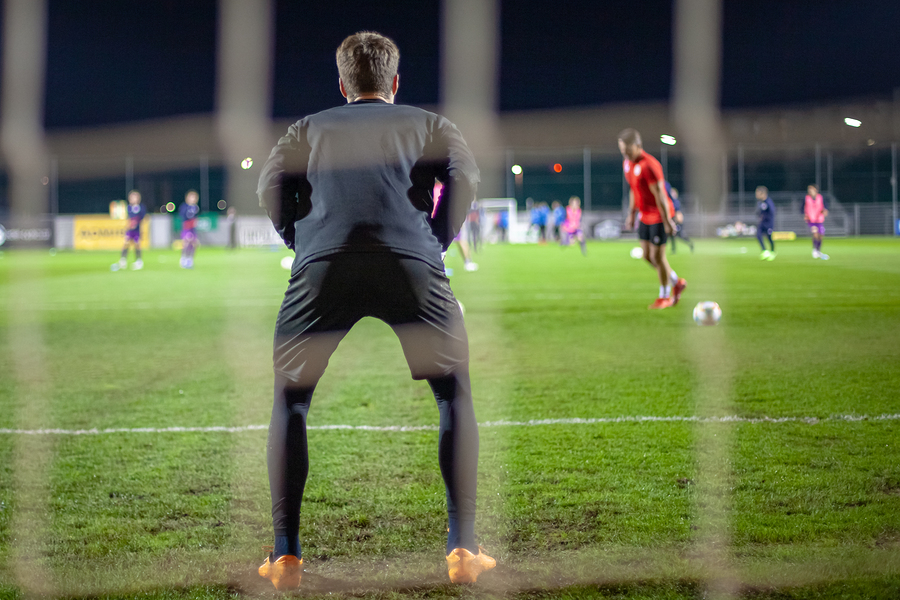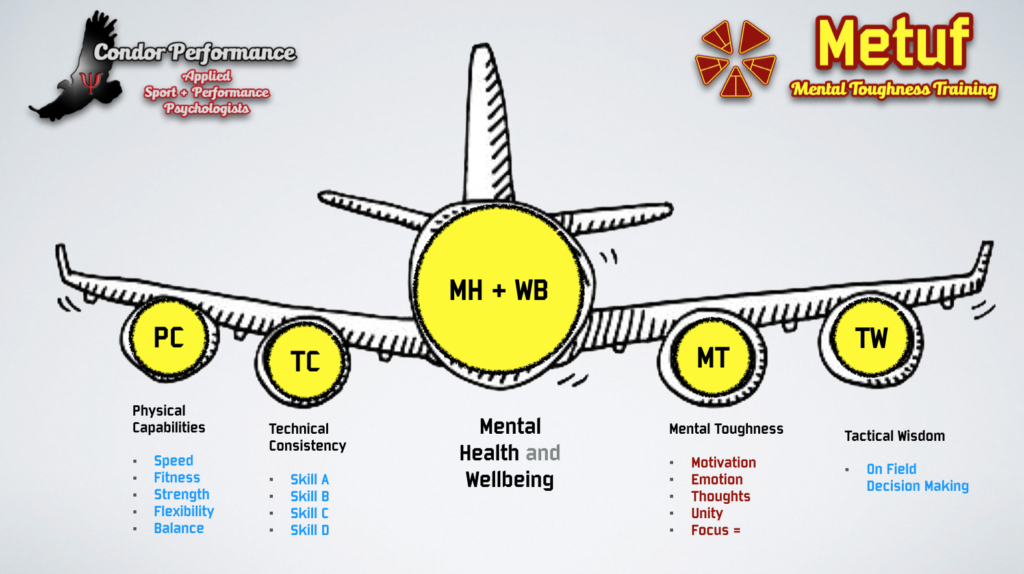Radio Interview:
Full Transcription:
Tim: All
right, let’s talk a bit of psychology. They do say, sometimes, that sport can
be 80 percent in your head and 20 percent ability. Or is it the other way
around? Well, let’s find out.
Tim: Well you hear often that our sports people turn to sports psychologists for help and you wonder how prevalent that is. Well let’s find out. I’ve got Gareth Mole from Condor Performance Sports and Performance Psychology on the line. Good date Gareth.
Gareth J. Mole: Hey, Tim, how are you doing?
Tim: Good,
how often do sports people turn to you?
Gareth J. Mole: Not as often as you would think. Tim. I suppose the peculiarity of our profession is that most people are completely aware that the mental side plays a massive role. The old cliché that golfers seem to use is that their sport is 90 percent mental. And yet for some reason, it doesn’t transfer in to a massive percentage of athletes and coaches using our services, to the degree where you would think they would. Based on what we specialise in.
Tim: Yeah, interesting you should mention that because golf, I actually asked Greg Norman that question, some years ago. He didn’t say 90 percent, but he said 80. He said “Look we can all play on the tour, we can all shoot rounds of golf under par and then it becomes the mental side of it.” And you see golfers, don’t you, often, and they seem to implode. And that has to be, it can’t just be the ability to play the game. It has to be mental.
Gareth J. Mole: Yes, absolutely. A good way of, my response to Greg’s 80 percent would be two things. One, as athletes improve, the mental side becomes more dominant. The fact is that an eight year old playing golf with his buddies, it is predominately technical. The guy who can chip the best is probably going to do the best. It is very technical at that level. But what happens, Tim, and there’s a growing amount of research for this is that as athletes improve, because everybody is good at the technical … let’s be honest, let’s look at tennis as an example.
Gareth J. Mole: If we look at the top 100 tennis players in the world, technically, they’re all very very good.
Tim: Yes.
Gareth J. Mole: Physically, that means fitness, strength, cardio fitness and flexibility. They’re all very very good. So therefore, what’s making the Roger Federers of the this world consistently better than the guys ranked 100 or 500, given that physically and technically he’s not that much better than them. And really it boils down to what’s left if everybody is more or less even when it comes to those. And of course, what’s left is the mental side. And that’s a good way of, I suppose, adding a little bit of details to that 90 or 80 percent mental. The full answer is golf, becomes 80 to 90 percent mental when you get to the point where you can’t really improve your back swing. Or your fitness and therefore the remaining improvement need to come in things like concentration, confidence, motivation and the like
Tim: There’s so many examples to use, currently. Novak Djokovic being one of them. Now, in a real bad patch with his form, and he was the dominant player in the game for many many years along with and Roger of course. And he’s only 30 and Roger is significantly older than him and Rafael’s about the same age. Now he’s coming back from an elbow injury, but you’d think he wouldn’t be playing if the injury was still plaguing him physically, so then is it plaguing him mentally?
Gareth J. Mole: Well, you would expect, yeah. The tricky thing when it comes to what we do is because we don’t have direct contact with those particular players. And so in many ways we’re just like tennis fans like the rest of us where we watch them in the Australian open and so on and so forth. And it’s tricky to know exactly who’s involved in the entourage, so to speak. For those kind of complications. The interesting thing about Novak is of course, couple of things happened, I think he got married and that massively improved his performance for a patch.
Gareth J. Mole: And there’s a reason for that. Which essentially is based on the distribution of pressure. If you’ve got a successful home life, suddenly, getting knocked out in a semi final of a grand slam isn’t the tragedy that you thought it was if you were obsessed, unhealthily obsessed as a single person. And then of course, the injuries … the changing of the coaches, very very frequently is quite another interesting thing to observe from afar. Because of course, at that level, the fascinating thing about the coach-athlete relationship at the highest level is, if we’re to be completely honest, the likes of Boris Becker for example, or Stefan Edberg, they’re not telling the likes of Novak Djokovic how to hit a back hand.
Tim: No
no.
Gareth J. Mole: They must be, predominantly coaching the metal side. And the fascinating thing from our perspective is, is being a former player a sufficient qualification for you to dispense psychological advice?
Tim: Good
question.
Gareth J. Mole: Now, my gut instinct is no. It’s not. With all due respect to somebody who has won five or six grand slams as Boris Becker may have. What mental strategies that have been, I suppose recommended by the scientific research which of course is what we use to make sure that there’s no guesswork involved in our work. Is being used. And therefore, what I think is going to happen over the next five to ten years, Tim, and we’re only just starting to see it, is, I think you’ll start seeing a much greater percentage of coaches consulting with sports psychologist. We’ve started to see a shift in the last couple of years. And the theory behind that is, you don’t want to send an ex-athlete off to university for seven years to get a psychology degree. Because by the time they’ve finished, everyone would have forgotten about them.
Gareth J. Mole: And you probably don’t want to force a psychology student to play 200 games in the NRL before you then allow him to help some.
Tim: I’ve
got you. Yeah I understand.
Gareth J. Mole: So the ideal combination is where you get the people who really know their stuff in this are, which of course is us. And you put them with a coach and the combination of our knowledge with their experience in sport, should be pretty useful when it comes to them coaching athletes at the highest level.
Tim: Yeah,
look there’s so many examples, currently to use, but I tell you one that
worries me, and tell me if I’m being worried unnecessarily about a young ruby
league player, in this instance, and there’s probably a few we could nominate.
Jackson Hastings who’s had all sorts of dramas, mainly confrontation with his
captain. Out at a night club. And he’s been flicked down to reserve grade four.
Allegedly the rest of the year. Now, kids only 21. And the pressure that that
places on him, mentally, worries me. Should I be worried about that?
Gareth J. Mole: Yeah, look it’s a good question. Look, the short answer is no. He lives in Australia, this is one of the best countries in the world to be, if the wheels start falling of anything. Compared to so many other places. So, I don’t think so. There is a question of … and it’s a question that we’re constantly weighing up, me and my colleagues. Of, the overlap of mental health and what we call mental toughness. Just to very briefly go back to my initial comment about sports psychologist being used less than you would think. My gut instinct as to one of the major contributing factors to why that is, is the confusion between mental health and mental toughness. And a very simple way of separating them is: mental health is the stuff which, depression, anxiety, and stress for example. Which anybody could be suffering with.
Gareth J. Mole: It’s a real issue and it shouldn’t be taken lightly. And me and my four colleagues at Condor Performance are a tad controversial, Tim, in that we personally believe that sport psychologist probably shouldn’t be helping rugby league players with clinical depression. Given, that there are, I think 15 or 16,000 clinical psychologist in Australia …
Tim: To
deal with that, yeah.
Gareth J. Mole: Who are very very very experienced at dealing with that. And therefore, we believe that mental health should be taken very seriously, but shouldn’t be confused with mental toughness. Now, mental toughness, we believe is like the technical side and the physical side. Would apply to all athletes of all levels. We’re talking about a basic concept such as concentration. Can someone who’s concentration is pretty good, be improved to be so that it’s excellent? So that it’s almost infallible? So in that example that you just mentioned with Jackson, where, are you concerned. My gut instinct, again, I don’t have anymore information that you probably have.
Tim: No.
Gareth J. Mole: But my feeling is, there’s a lot of cases in many different sports where the first thing that they’d kind of want to work out, is, is this particular athlete … have some kind of a mental illness? In which case, they go down that path. Or, are they actually mentally fine, but some of the issues that they are struggling with, just due to the fact that no one at the club, the coach, is not particularly skilled when it comes to coaching mental aspects such as confidence and [crosstalk 00:11:02].
Tim: Yeah, and they become ostracised. So.
Gareth J. Mole: That’s right.
Tim: So
when athletes come to you, what’s the main thing that they want? Improve
performance, obviously, yes?
Gareth J. Mole: Yeah, so it’s a whole bunch of words that start with the letter C. And it’s quite remarkable, because they kind of all start with the letter C. So typically when people first contact us, they fill in a mental toughness questionnaire. And it’s a self report measure. That’s one of the other weaknesses of psychology, unlike a fitness test, where you can’t fake it, you can’t fake a
Tim: No.
Gareth J. Mole: You can totally fake a psychological test. Because you can give answers based on what your dad wants to hear for example. But it’s a self report measure and it generates a whole bunch of scores and those scores related to areas that we regard as critical for performance and entirely mental toughness related. And they are basically things like concentration, confidence, commitment, creativity, communication. So sometimes the term mental toughness is used like a single concept. Like “oh, can you help me with this particular athlete, because he’s mentally weak, can you make him mentally tougher?”
Gareth J. Mole: The term mental toughness is actually a little bit broad. Because it’s quite possible for someone to contact us who’s commitment levels, there’s one of the C words, the commitment levels is excellent. But their confidence is way down. And then someone else contacts us and it’s the exact opposite. In other words, they’re actually quite confident, when it comes to playing and training et cetera. But they’ve lost all their motivation. And one of the reasons why the, we insist on working with almost every body one on one, whether they be a team sport athlete or an individual athlete, is because of the fact that every body’s mental toughness profile is a little bit different. And therefore, you can imagine the work that’s getting done with someone who’s confidence is high, but who’s commitment is low, is very different from the work that’s done with someone who’s profile is the opposite.
Tim: Yeah,
and look it’s a fascinating discussion, it is. And thank you for sparing the
time. And I could talk to you for a long time. But let’s just finish with this,
and come back to golf. Because Jason Day has recently said, yeah he’d love to
be the world number one again, but he had all of these things going on in his
life last year, his mum became very sick, his wife had a miscarriage, and life
was awful. Now, he says, “Life’s great at home and I’ve got nothing to
think about but golf.” And he stopped going to the gym, because that was hurting
him, he just concentrated on playing golf. But if it’s rugby league or rugby
union or AFL, you’re playing for 80, 90 minutes. Golf is, you’ve got to
concentrate, there’s that C word again. Over four days in a major championship.
Surely that requires a lot of what mental toughness, focus, what?
Gareth J. Mole: Yeah, look. Let’s be honest. Anything, any test cricket in golf, are pretty remarkable in that …
Tim: Hours
and hours. Yeah.
Gareth J. Mole: Yeah. The way we do it very simple, and if there’s any cricketers or golfers listening they can absolutely implement this. During a four hour round of golf, Tim, you only really want to be concentrating for about seven or eight minutes. So the majority of the time, during a four hour round of golf, and this applies to test cricket as well, is not spent playing cricket or golf. Think about it, you hit a tee shot and you then have a …
Tim: Then
you walk for …
Gareth J. Mole: That’s right. Now walking …
Tim: Hopefully
300 meters. Yeah.
Gareth J. Mole: That’s right. Walking, even if you duff it, you probably still have to walk for about 45 seconds. So, the huge mistake made my most of those start-stop athletes that we call them. Any sport which involves attempt, stop, attempt, stop, attempt.
Tim: Got
you. Yeah.
Gareth J. Mole: All of those table sports. The big mental mistake made by all of them, is they try to concentrate as best they can from the beginning and they aren’t aware that human beings just are incapable of maximum concentration for longer than about an hour. Most of us, will peak at about 45 minutes. It’s why school classes normally are around about 45 minutes or an hour. Because they know this kind of thing. And therefore, if your sport is something that goes for longer than an hour. And involves start, stop, start, stop, one of the simplest, easiest to implement mental strategies is the use of routines, pre-shot routines.
Tim: Yeah,
all of it. Yeah.
Gareth J. Mole: For golf, whereby you are only starting your concentration about ten seconds before each attempt. And you are intentionally switching off about five to ten seconds after each attempt. So with the exception of putting, because there’s no walking involved. That virtually guarantees that you are resting your mind for a lot longer between the shots than you are using your mind just prior to each shot. And therefore, concentration levels could potentially be maximised day after day after day. Because you’re not concentrating for four hours, you’re concentrating for about 25 seconds and then resting for another few minutes.
Tim: I’m
with you. Yeah. God it’s a fascinating subject and that’s absolutely true in
relation to golf, and I know I said it was the last thing, but just one more
thing because it does fascinate me. You’ll see Jason Day do that. The pre-shot
routine where he does that little flutter with his eyes, and it’s exactly the
same thing every time. And then, you’ll often see him laughing and smiling with
his caddy or his playing partner. Whereas, Tiger Woods on the other hand, looks
like he’s focused and zoned in all of the time. Is he?
Gareth J. Mole: Well, yeah, again, another very interesting question and all I can do is, I suppose, comment based on what I’ve seen. My feeling is that Tiger wouldn’t have been able to achieve what he achieved at his peak if he wasn’t using some pretty effective switch on, switch off strategies like I’ve just mentioned. It’s just, we just know from the research, Tim, human beings can not concentrate for four hours at a time. So my feeling is that there was either, a little bit of gamesmanship going on with Tiger, whereby he was able to mentally switch off but have everyone else think he was not switching off. So that of course they would copy him and mentally burn out on the 12th hole. Which is what most people do.
Gareth J. Mole: Either he was doing that, or he was just switching on, switching off and we had no way of actually telling. What Jason’s doing there with the laughing and joking around with the caddy, that’s the much more obvious way to do it. Because by doing that and being overtly relaxed between shots, those actions, as a general rule, actions lead the mind. That’s the philosophy that we use. In other words, we don’t actually spend a whole lot of time trying to change peoples thoughts. We spend a lot of time helping people change their actions. Which leads to, generally, more useful thought.
Tim: Yeah,
right.
Gareth J. Mole: And the chances of you forgetting to switch off, if you are chatting to your caddy about the movie you saw a couple of days ago, are much lower, let’s be honest. There’s a much higher risk if you are only mentally switching off, but it still looks like you have laser focus throughout the entire full round.
Tim: Yeah.
Gareth J. Mole: It would be easy to forget.
Tim: Yeah.
It’s all very fascinating. So Condor Performance Sports and Performance
Psychology. We’d find you on the net I’m sure if anyone wanted to get in
contact?
Gareth J. Mole: Yes, Tim, absolutely. And I look forward to speaking to you further whenever you guys want to have a chat about the mental side. As you could probably tell, we could probably talk on a weekly basis and I’d be more than happy to make myself available for that.
Tim: Yeah,
well that’ll be lovely because the whole subject fascinates me. Thanks Gareth,
thanks very much.
Gareth J. Mole: Thanks, Tim.
Tim: That’s Gareth Mole from Condor Performance.

